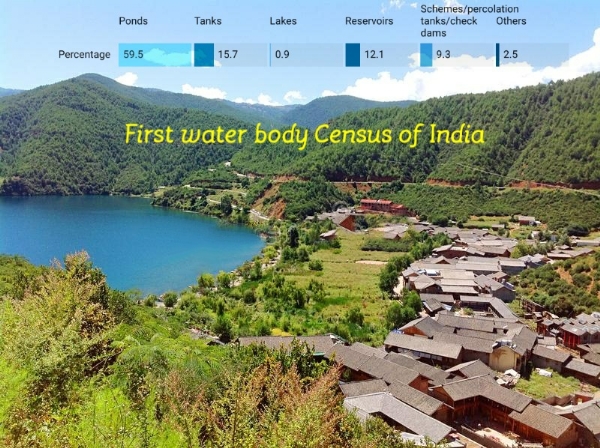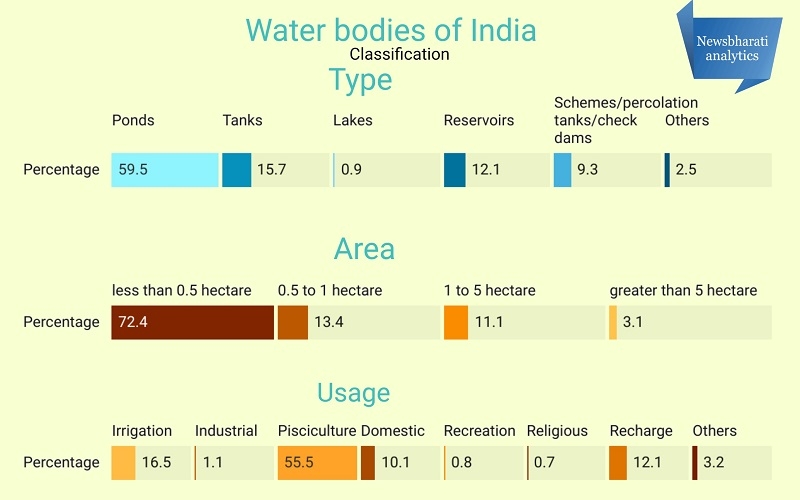An insight into the first water body census
Sustaining 18 percent of world population with only 4 percent of global water resources
Total Views | 122

For a nation sustaining 18 percent of world population with only 4 percent of global water resources, water is precious. This is precisely the case of India and yet it took 75 years after independence to have our own water bodies census. This is one of the singular achievements of the Modi government.
Proper use of technology and rigorous implementation, the hallmarks of this regime, reflect in the wealth of data gathered in the census. In an earlier attempt done in eleventh plan (2007-2012) under India-WRIS project, an inventory of 8.5 lakh surface water bodies (> 0.1 hectare in size) were prepared from Linear Imaging and Self Scanning Sensor IV and Cartosat- 1 merged satellite data. The latest census counted 24,24,540 water bodies across the country. The enumerators actually visited each and every water body and from a specially developed app, the captured photographs along with the latitude and longitude of the water body were uploaded on the online portal. There were elaborate cross checks. 25% of schedules were scrutinized by immediate supervisor of the enumerator and 10% schedules of water bodies were scrutinized by block level officer. The block level officer had to visit atleast 5 villages in his block and physically verify the water bodies covered, quality of census and the extent of coverage of water bodies in the village and scrutinize at least 10% or 300 schedules, whichever is maximum, in order to ensure the correctness of data collected.
One of the notable finding was that 55.2% (13,38,735) water bodies are owned by private entities whereas 44.8% (10,85,805) are under public ownership. If after 75 years of public spending on various infrastructures, more than half of the water bodies are owned by people, it shows the vision of our ancestors, because 78% are man-made water bodies whereas 22% are natural water bodies. The low rate of encroachment, only 1.6% (38,496) water bodies are reported to be encroached, also indicates that people care and value the precious resource.

The data opens many avenues for further research.
A look at the map of irrigated land shows us the disconnect between States rich in water bodies and States which have a high percentage of irrigated land. The reasons are for experts to analyze. But the first ever water body census has paved way for further insights.
Bharati Web







